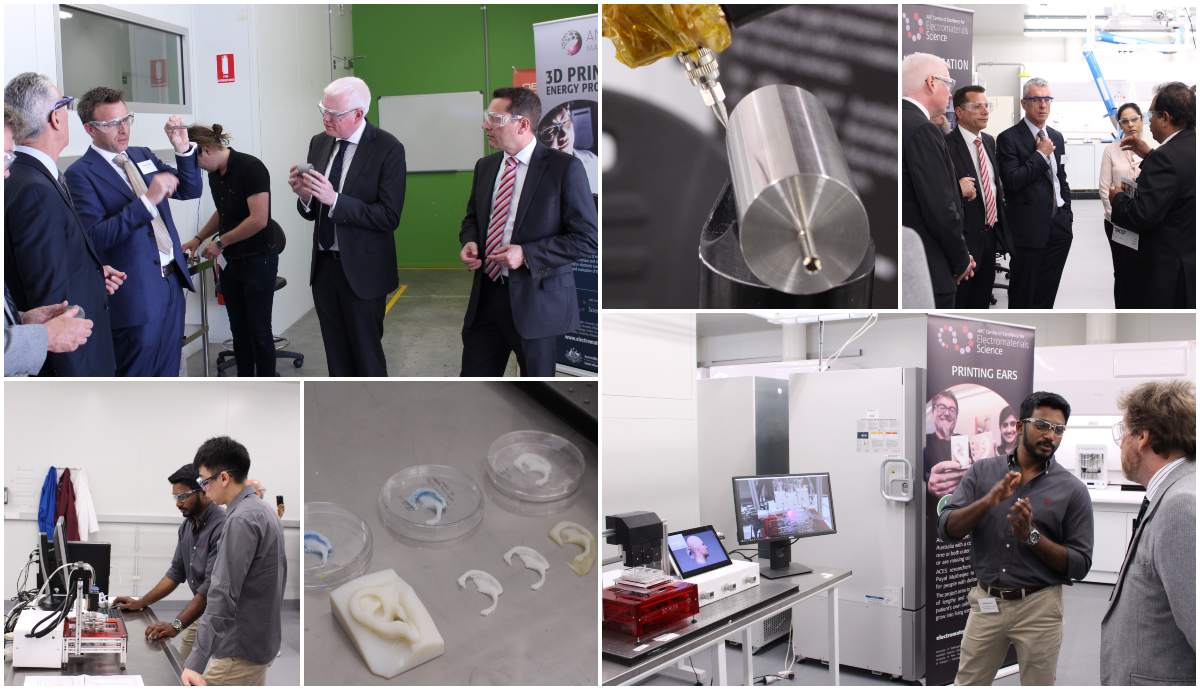November 28, 2018
TRICEP ready to strengthen 3D bioprinting in Australia
New facility will connect research and industry to fast-track bioprinting solutions to combat significant clinical challenges.
The TRICEP initiative – Translational Research Initiative for Cellular Engineering and Printing – was officially opened yesterday (27 November) by the Parliamentary Secretary for the Illawarra and South Coast, Gareth Ward MP.
TRICEP offers Small Medium Enterprises (SMEs), research institutions and industry the opportunity to partner with leading researchers to develop and commercialise 3D bioprinting technologies for use in the medical industry to combat significant clinical challenges.
TRICEP is a 100 per cent owned initiative of the University of Wollongong (UOW), and draws on expertise and facilities available within the ARC Centre of Excellence for Electromaterials Science (ACES) and the Australian National Fabrication Facility (ANFF) Materials Node, both based at UOW’s Innovation Campus.
ACES Director Professor Gordon Wallace said TRICEP is positioned to unlock breakthroughs in the treatment of significant medical conditions.
“The TRICEP team has a strong track record of identifying and customising materials and fabrication protocols to deliver 3D bioprinting solutions for real world clinical problems, including the development of the BioPen for cartilage regeneration, the iFix Pen to treat corneal ulcerations, and 3D Alek to create printed ears,” Professor Wallace said.
“Our in-house ability to develop both customised hardware and bio-inks, as well as our expansive clinical network, makes us uniquely placed to help companies create a complete end product that is tailor-made to combat a specific medical challenge.
“In addition, our extensive medical network throughout Australia and reaching overseas enables collaborations to ensure that clinically relevant systems and protocols are developed.”

Member for Kiama and Parliamentary Secretary for the Illawarra and South Coast Gareth Ward said TRICEP would extend the Illawarra’s strong local industry collaboration network.
“The establishment of TRICEP strengthens the Illawarra region’s identity as a place of innovation and technology, and signifies a boost for our local skills base, the economy, and local and national industry,” Mr Ward said.
“TRICEP provides an opportunity for SMEs and industry partners to connect with leading researchers and access local innovative knowledge and hardware to develop exciting new clinical solutions.”
Professor Wallace highlighted world of 3D bioprinting is a major global growth segment.
“There are numerous opportunities for Australian industry to expand into 3D bioprinting, from supplying the raw ingredients for bio-inks through to formulating and packaging them.
“Likewise, in the engineering space, there is room for growth in the design and manufacture of customised printers for a range of clinical applications,” Professor Wallace said.
“TRICEP can help Australian SMEs to capitalise on these commercial opportunities to gain an advantage in this growing field with accelerated knowledge, product development, and skills base.”
TRICEP houses a range of additive manufacturing technologies, including the highest resolution metal printer in Australia and the country’s leading biofabrication capability to develop biomaterials, allowing the team to produce specialised 3D printing devices and customised bio-inks (gels containing living cells to regenerate tissue to repair damage within the body) to treat specific medical conditions.
ACES and UOW are also making it possible for anyone learn about 3D bioprinting through a Massive Open Online Course (MOOC) Bioprinting: 3D Printing Body Parts.
UOW also offers a Graduate Certificate in Biofabrication, a practical online course designed for professionals currently working in the fields of science, health, engineering and technology, as well as those who want to pursue a career in biofabrication.
